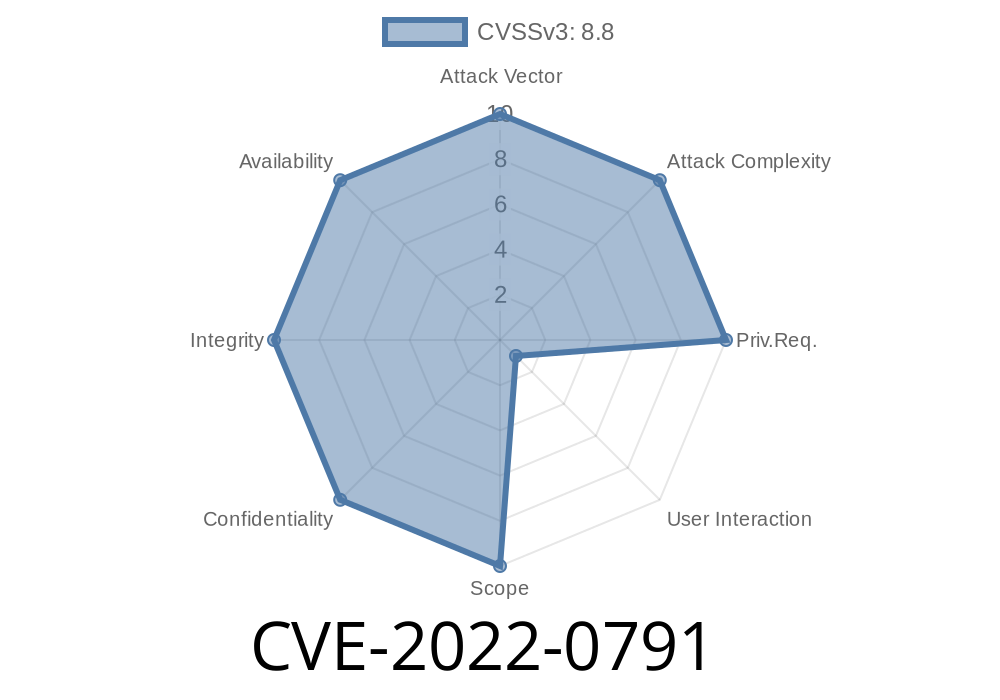A recently discovered vulnerability in Google Chrome (CVE-2022-0791) affects versions prior to 99..4844.51 and involves a use-after-free issue in Omnibox, the popular address bar feature in the browser. A remote attacker could potentially exploit this vulnerability to corrupt heap memory in the browser by convincing a user to engage in specific user interactions.
In this blog post, we will be diving into the details of this vulnerability, examining the code snippets involved, and discussing the exploit scenarios and potential mitigations. We will also provide links to the original references for those interested in further research of this issue.
Code Snippet
While the exact code causing the vulnerability has not been made public by Google, we can discuss the general concepts of use-after-free issues to better understand the potential risks posed by this vulnerability.
Use-after-free vulnerabilities are memory corruption issues that occur when a program continues to use memory after it has been freed. This can result in unintended behavior, crashes, or even arbitrary code execution in some cases. A typical example of vulnerable code, which is often seen in C or C++ programs, might look like this:
#include <stdio.h>
#include <stdlib.h>
int main() {
int *ptr = (int *)malloc(sizeof(int));
*ptr = 42;
free(ptr);
printf("Value after free: %d\n", *ptr);
return ;
}
In this example, an integer pointer ptr is allocated memory using malloc, assigned a value (42), and then freed using free. However, the program continues to use the ptr pointer after it has been freed, trying to print its value. This constitutes a use-after-free vulnerability.
For CVE-2022-0791, the use-after-free issue occurs in the Omnibox component of Google Chrome, though the specific code snippet has not been disclosed to avoid potential exploitation.
Exploit Details
For an attacker to exploit this vulnerability, they need to convince a user to engage in specific user interactions with a maliciously crafted website or link. The attacker could, for example, send a victim a phishing email containing a link or an embedded HTML code snippet that triggers the use-after-free condition in Chrome's Omnibox when followed. By doing this, the attacker can potentially take advantage of the vulnerability to execute arbitrary code, control the browser's behavior, or cause a crash.
To demonstrate this, we'll use a hypothetical malicious code snippet
<script>
// [...]
var evil_url = "https://evil.example.com/exploit_CVE-2022-0791";;
window.location.href = evil_url;
// [...]
</script>
In this example, a script on a malicious website could force a user's browser to navigate to a crafted URL, triggering the use-after-free vulnerability.
Below are links to the original references for CVE-2022-0791
- Google Chrome Releases: link to announcement
- Chromium Bug Tracker: link to specific issue discussion
Mitigations
To prevent exploitation of this vulnerability, users should update Google Chrome to version 99..4844.51 or later. It's essential to routinely apply security updates to keep your software safe from potential threats.
Additionally, users should practice safe browsing habits, such as verifying the authenticity of the websites they visit, avoiding clicking on unfamiliar links, and installing browser extensions from trusted sources.
Conclusion
CVE-2022-0791 is a use-after-free vulnerability in the Omnibox component of Google Chrome affecting versions prior to 99..4844.51. By convincing a user to engage in specific interactions, a remote attacker could potentially exploit this vulnerability to corrupt the heap memory in the browser. Ensuring that your browser is updated to the latest version, combined with good browsing habits, can help protect you against this and similar threats.
Timeline
Published on: 04/05/2022 01:15:00 UTC
Last modified on: 08/15/2022 11:15:00 UTC
